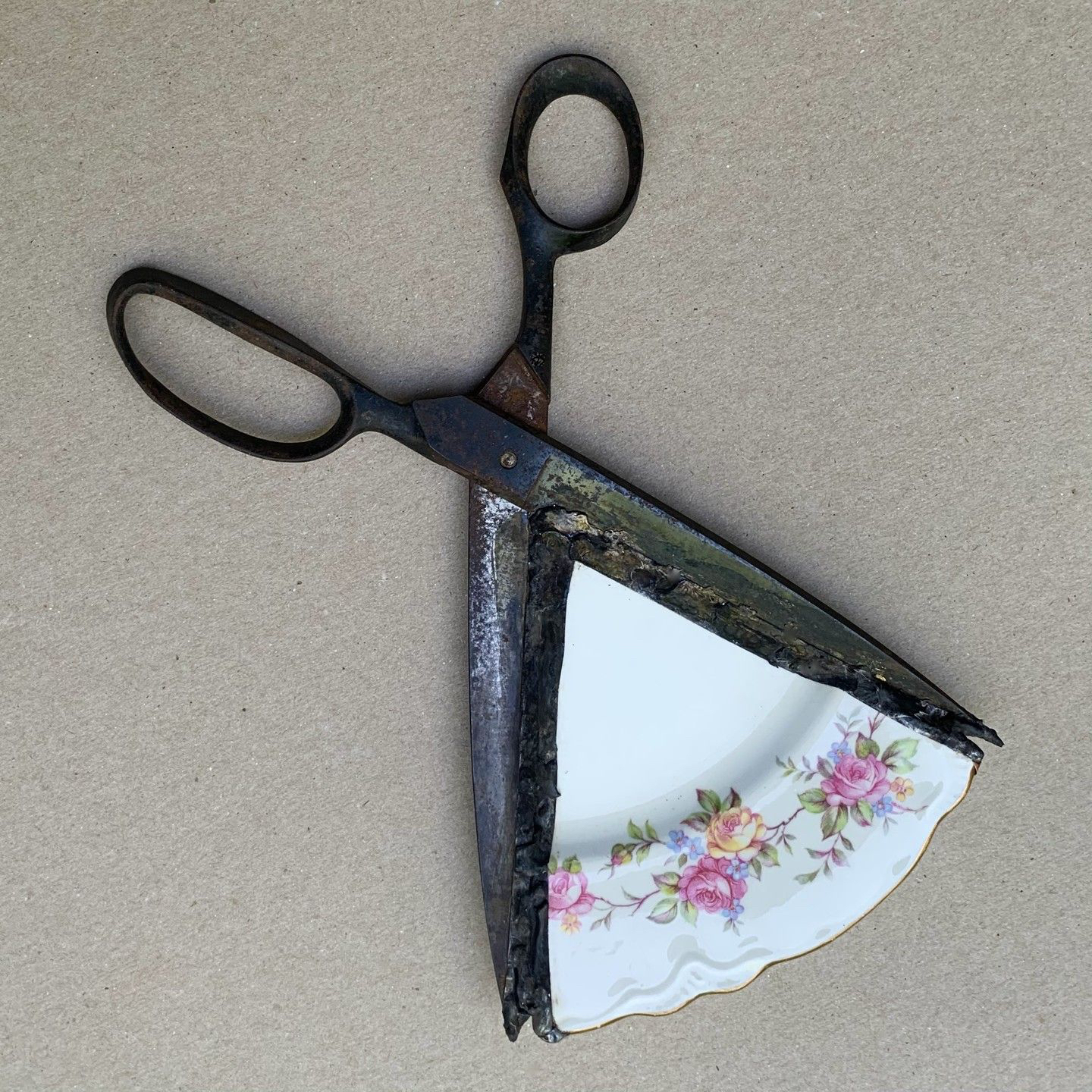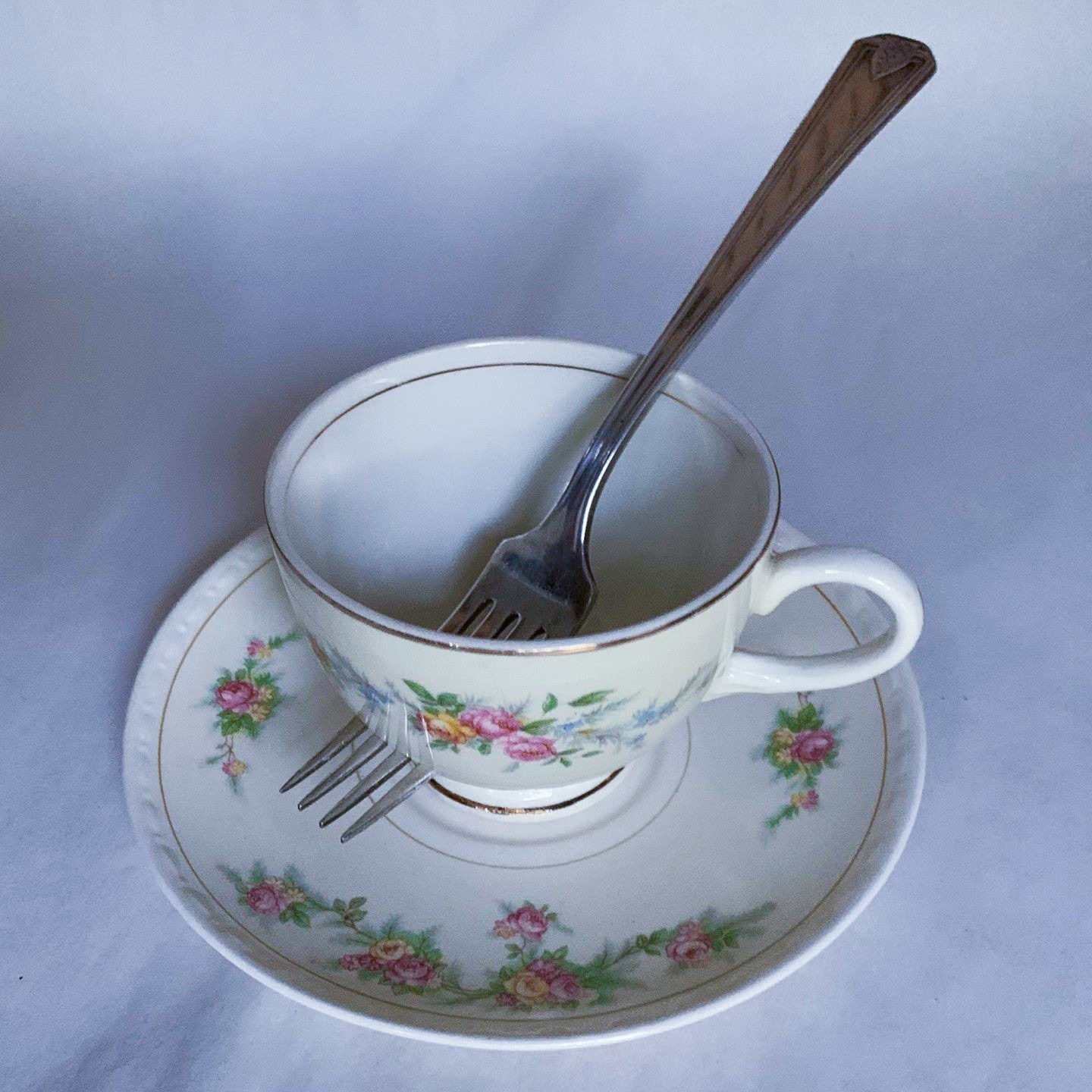Glen Taylor‘s artistic creations are far from fragile or traditional. He artfully combines unexpected elements like barbed wire, cutting tools, and metal chains with shattered pieces of ceramic to craft one-of-a-kind teapots, cups, and saucers. These intriguing works delve deep into the multifaceted and often contradictory aspects of human nature.
The Inspiration Behind the Work
Taylor’s inspiration stems from kintsugi, a Japanese art form that repairs broken ceramics with metallic seams, usually gold or silver. This technique not only restores functionality but also adds a new layer of beauty, embracing the object’s history and imperfections.
Much like kintsugi, Taylor’s art pieces serve as visual metaphors for the intricate tapestry of human emotions and experiences. He describes his creative process as a way to explore his “sense of awe, puzzlement, and the ongoing struggle with the complex realities of human life.”

Exploring Human Emotions Through Art
What sets Taylor’s art apart is its capacity to evoke a wide range of human emotions and experiences. From the complexities of love and loss to the challenges of courage and vulnerability, his works compel viewers to confront their inner worlds. Taylor himself describes his art as an “ongoing quest to expose the deep-seated emotional scars of love and life, urging us all to embrace our own vulnerabilities.”
For those eager to experience these captivating works firsthand, Taylor will soon be exhibiting his art in a New York gallery. Keep an eye on his Instagram account for real-time updates or explore his extensive portfolio on his official website.

The Intersection of Material and Metaphor
The choice of materials in Taylor’s art is particularly thought-provoking. Ceramics usually signify fragility and beauty, elements commonly found in domestic settings. In contrast, industrial elements like barbed wire and cutting tools evoke a sense of harshness and danger. By merging these contrasting elements, Taylor invites us to reevaluate our notions of strength and fragility, beauty and disarray, and the sacred and the mundane.
The Emotional Power of Art
Taylor’s work fits into the broader context of art as a form of therapy, where the creative process serves as a journey of self-discovery and emotional healing. Art has long been recognized for its capacity to stir emotions and prompt us to ponder complex aspects of life. Taylor’s art reminds us that it’s our flaws and individual histories that contribute to our unique beauty and depth.

The Transformative Impact of Kintsugi
Kintsugi is not just an art form but also a life philosophy. This ancient Japanese practice, dating back to the 15th century, teaches us to find beauty in flaws and to appreciate the history and journey of both objects and people. It resonates with modern-day values of sustainability by promoting repair over discard and uniqueness over uniformity.

Glen Taylor’s art is not merely about aesthetics; it is a commentary on the human condition. It prompts us to find beauty in imperfection and strength in vulnerability. By blending contrasting materials and themes, Taylor’s work invites us to confront and embrace the complexities of being human. His upcoming New York exhibition offers an unmissable opportunity to engage with these compelling narratives in person.
Key Takeaways
- Glen Taylor’s art combines delicate ceramics with robust industrial materials, creating a rich visual metaphor for the complexities of human emotion and experience.
- His work is deeply influenced by the Japanese art form of kintsugi, which celebrates an object’s history and flaws rather than hiding them.
- Taylor’s upcoming New York exhibition offers an invaluable opportunity to experience his evocative art firsthand, making it a must-visit for all art enthusiasts.




